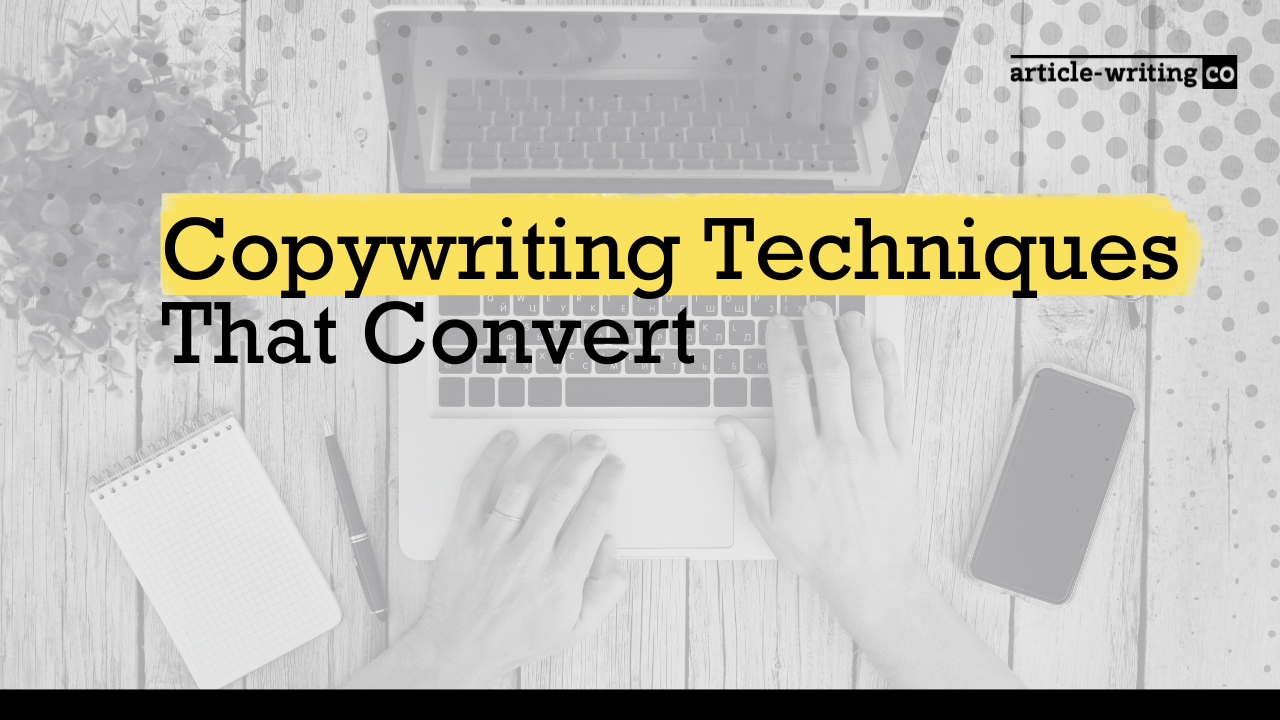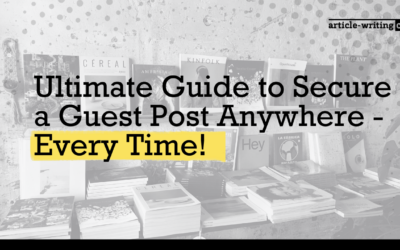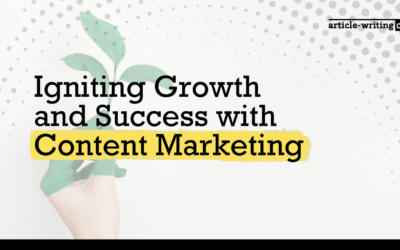Copywriting is essential to any brand with a message. If you’re responsible for the copywriting of a company, you know how important it is to create high-quality content that draws readers in and results in making more sales for the company.
Becoming an effective copywriter starts with knowing what copywriting is. It’s also knowing what it can do for a company, and finally how to use it effectively. Writing copy that converts for a business is more than just jotting down some thoughts and telling customers that your product or service is the best of the best. It includes a lot of research and working on your writing skills to be sure you’re using all of the tools available to be successful.
Copywriting does more than just relay a message to an audience. It promotes the brand as a whole by giving readers a more in-depth view of what the company does and what it stands for. Great writing can help to improve the reputation of a brand as well as creating a sense of customer loyalty. It can also do wonders for driving website traffic and converting clicks to sales.
Copywriting Format and Structure
There are many ways to get your message to readers. All of them can be effective, but you’ll need to decide which is best for your brand, your audience, and your specific message. Choosing a copywriting format will help you narrow in on your writing style. Then, you can focus on writing the content that will speak to your readers in a way that will grab their attention and keep them interested.
A few copywriting formats that might work well for your company are:
- Clean and Simple– This is copy without all the frills. It’s straight to the point and gets the message across clearly.
- Long Form Copy– Just the opposite, long form copy includes all the details, predicting questions and giving answers.
- Storytelling– Just as the name suggests, storytelling gives readers a picture of how a product or service will work for them by telling a story with a problem and solution.
- Conversational– This type of writing makes the reader feel like you’re not a stranger, but someone they’re sitting down with for a one on one conversation.
- Big Claims– This attention-grabbing copy will make readers take notice and act, as long as you can back up your claims.
How to Write Compelling Copy
You may be a great writer, but can you write copy in a way that spurs your readers to action? You’ve decided on a copywriting format. Now it’s time to sit down and write the content that will be going out to your readers.

To write copy that that converts by grabbing attention, pull readers in, and keep them interested, try these tips:
- Know you audience– Take time to find out what your potential customers are interested in and what spurs them to make decisions.
- Have a goal in mind– Are you trying to make a sale? Asking readers to sign up for a newsletter? Know exactly what you’re hoping to get out of this piece of copywriting.
- Use an attention-grabbing headline– Like the Buzzfeed headline above, yours should make readers want to click. Shocking pictures of the illuminati? That seems like a headline worth clicking.
- Make it relevant– Use relatable stories and examples to help your readers visualize themselves using what you’re selling.
- Break up content– Blocks of text won’t hold interest. Break it up with lists, sections with headers, and visuals.
- Create a sense of urgency– Use wording that makes readers feel like they should take action immediately, so they won’t miss out on what you’re offering.
- Include a call to action– Never miss an opportunity to tell readers how they can follow up to take advantage of the opportunity you’re giving them.
Creating Powerful Calls to Action
When your reader reaches the end of your copy, they should know exactly what to do next. You can direct them with a powerful call to action. This is how you’ll wrap up all of that compelling copy and encourage readers to take the next step. Your call to action should be direct, easy to see, and easy to follow through on.

This call to action from our very own website is clean, concise, and includes a cute emoji to boot. Readers know exactly how the company can help them and can easily see that all they need to do is click a button to get in touch.
Writing to Your Target Market
To be effective with your copywriting, you’ll need to know exactly who you’re writing to. This group is your target audience – existing customers and anyone who you would like to gain as a customer in the future. Determining your target market is how you’ll develop copy that coverts with this specific group.
There are three steps you can take to make it easier for you to write for your target market.
- Define your target audience – look at who is currently using your goods or services and perhaps think about who you would like to add to that customer base, then find out everything you can about them.
- Create your ideal customer– Using the information you collect, create a profile of your ideal customer with as much detail as possible.
- Write to that person – When you’re writing, be sure that you’re writing copy that converts for that one individual. Keep him or her in your mind as if you were speaking directly to them.
Conducting Copy Research from Your Customers
After you’ve determined your target audience, it’s time to dig in and see how your company can benefit them. You can use the data from this research to improve your products and services, redirect your marketing efforts, and write copy that will better appeal to them as a group.
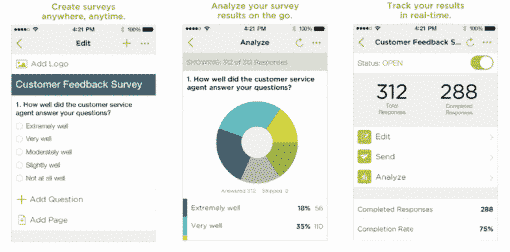
There are several ways to collect this information. Surveys, like the types shown from the Survey Monkey app in the image above, will give you the exact information you’re looking for, in a way that makes it easy to analyze and work with. You might also follow up with customers through email or ask questions to all of your followers through social media posts.
Crafting the Most Effective Headlines
Headlines may not seem like much in the grand scheme of copywriting. However, they can make all the difference in whether your content gets attention or gets lost in the shuffle. In the example below from eHarmony, the headline pulls at the heartstrings (an important attribute in copy for a dating site!) It also leads the reader to want to learn more about the service.
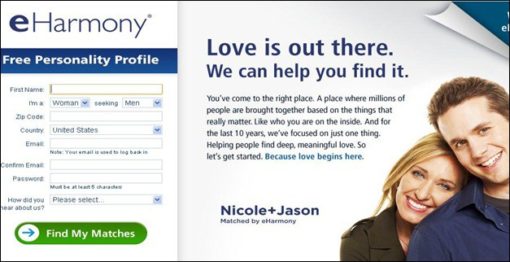
Use these tips to help create a headline that will catch your readers’ attention and encourage those around the internet to click and read more.
- Use a working title– Don’t let a lack of headline stop you from getting to the good stuff. Choose a boring headline and wait until inspiration strikes to change it up.
- Keep it simple– You don’t need to share all of the details of the article in your headline. Keep it short while still letting your readers know what they’re in for.
- Use your keyword– By now you should have a keyword or phrase in mind for your post. Add it into your headline to get it noticed.
- Make it bold– Catching the attention of internet users is the name of the game. Attention spans are short, so you’ll need your headline to make a big statement.
- Keep it relevant– You don’t want your readers to be confused when they continue reading past the headline and wonder what they just clicked on. Let your headline be an introduction to your content.
- Don’t go over the top– Making an outrageous claim will turn off many readers and your attempt to shock them into clicking will likely backfire.
- Keep them guessing– Spark your reader’ curiosity with a headline that will leave them wanting more.
The Difference Between Writers and Copywriters
Writers and copywriters are essentially doing the same thing, right? They each spend their days writing words, publishing them, and hoping that their target audience takes notice. That’s where the differences start. A copywriter is a professional, in line with sales and marketing teams.
A copywriter creates copy that converts for a living. The goal of that copy is to persuade customers and to make sales. In addition, a copywriter will usually work with shorter pieces of content like ads, sales letters, brochures, slogans, and TV commercial scripts. A writer is anyone who creates content. That can take many shapes, including articles, blog posts, social media posts, and books.
These are some of the ways you can tell the difference between a copywriter and any other writer.
Copywriters
- Focus on making sales with copy that converts
- Build the brand by sharing it with a wider audience
- Create an interest in the company
- Tend to focus on short-form writing
Writers
- Focus on keywords and SEO practices
- Share relevant, interesting, and useful information with an existing audience
- Keep customers engaged
- Focus more on long-form writing
It’s important to note that both types of writers have a mutual goal – to use persuasive writing to sell goods or services to customers. There is value in both copywriting and content writing and both are essential to building and maintaining a brand.
B2C Vs. B2B Copywriting
B2C is writing from a business to a consumer. B2B is writing from one business to another. The option you choose depends on the products or services you’re offering and who you’ll be marketing them to. Deciding which of these two copywriting styles you’ll be using will affect all aspects of your copy.
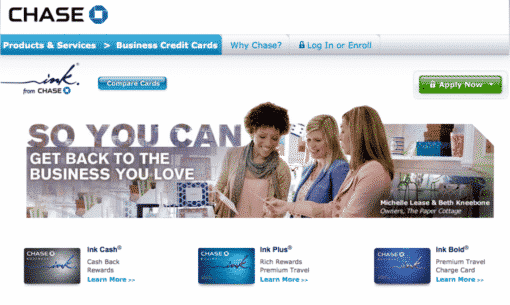
Here are some of the differences between B2B and B2C:
Business to Business (B2B)
- Usually has a more professional tone
- Focuses on practical decision making
- Can be sent directly to those making decisions in the company
Business to Consumer (B2C)
- Can have an informal tone
- Focuses on appealing to emotion
- Usually written to a wider audience that will find you rather than reaching out directly to them
In the ad above for the Chase Ink business credit card, the message is direct. Chase has created a B2B message with copy that converts by appealing directly to the logic of a business owner. It also focuses on a business decision to use this card.
How to Use Social Media to Support Your Copy
Social media is a powerful tool for any business. When used well, it can grow your customer base, drive traffic to your website, support communication to and from customers, and encourage customer loyalty to your brand. Social media and copywriting go hand in hand to promote a brand and work toward making a sale.
- Always use links to direct traffic back to your blog.
- Use eye catching images that will draw readers into your copy.
- Create consistency through branding like logos and colors, so readers will recognize them when reading copy on your website.
- Establish credibility with your bio and the way you communicate.
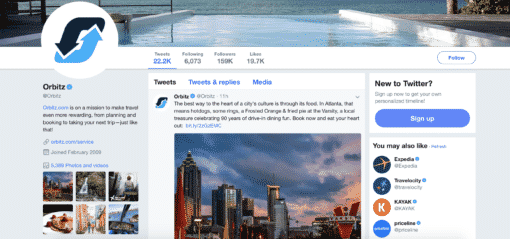
Orbitz is a company that’s doing a great job of connecting social media and copywriting. On the Orbitz Twitter page, above, they’ve hit all the points. Their post includes an eye catching photo of Atlanta that sparks an interest in traveling.
It also links back to the website where visitors are immediately shown options of hotels in the area, therefore encouraging them to take action immediately. The brand’s logo is front and center. The Twitter bio keeps it short and to the point. It lets followers know that the company does and how it can help them.
Improving Your Copywriting Skills
No matter how long you’ve been writing and how strong your writing skills are, there’s always more to learn and ways to improve.
Here are ten tips to help you improve your writing skills. You can use them whether you’re new to the copywriting world or a seasoned pro.
- Get back to basics– If you’re too much into your routine, you might be neglecting some of the basic rules of copywriting.
- Learn from others– For writers, reading the work of others is sometimes just as important as writing your own work.
- Use shorter paragraphs– Readers aren’t likely to sift through a block of text to find what they need. Using shorter sections will help them stay focused.
- Use lists and bullet points– Lists and bullet points are another good way to break up large blocks of text.
- Clean up the clutter– Skip the jargon and unnecessary extras. Keep your copy clean.
- Research before writing– While you may think you know your topic well, there’s always something new to learn and another source that will help add validity to your copy.
- Write for your audience– Copywriting isn’t about promoting yourself. It’s about promoting the brand by reaching customers.
- Write with authority– You’re speaking for a brand, so you’ll need to show customers that you know your stuff.
- Include necessary details– While it’s important to eliminate clutter and keep copy clean, be sure you’re giving the reader the information they need.
- Edit, edit, and edit some more. Above all, be sure you’re editing your copy before publishing.
The best way to hone your copywriting skills is to keep writing. You’ll continue to learn as you go what works and what doesn’t. Use feedback as a tool to make your writing better. When you inevitably hit a rough patch, work through it and move right along.
The copy you write will have a huge impact on the brand. It will affect how many people are exposed to your company and how successful your marketing campaign will be. Learning how to be more effective with your writing skills and strategies can help to write copy that converts, grow your company and, above all, find success in the digital world.

David is the Founder and Director of article-writing.co, the fastest-growing content creation agency in North America. He has transformed companies by offering high-quality content that has impacted their SEO ranking, revitalized websites with engaging and industry-relevant blogs and website copy, and championed successful email campaign copy.

